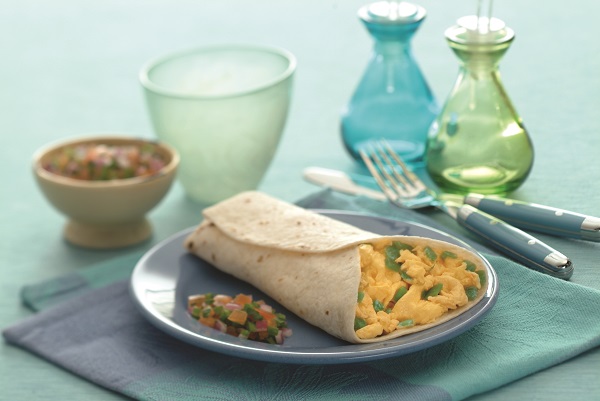Lower Sodium Fast Food Choices
You are out running errands or you are at work and didn’t bring your lunch. Now you need a quick meal. You go to a fast food restaurant, but you want to eat healthy so you order a salad. Thinking you made a great choice to stick to your kidney diet, then you find out that the salad has over 1,000 mg of sodium! But salads are healthy right? Why is it so high in sodium? Are there any lower sodium fast food options?
Sodium
Sodium is used as a preservative for foods as well as to help enhance color and improve taste. Fast food hamburgers, chicken patties and salad dressings often have added sodium for these reasons. It is recommended for kidney patients to limit their sodium intake to less than 2,000 mg a day or the amount prescribed by their doctor. This helps to limit fluid weight gain and manage blood pressure.
Lower Sodium Fast Food Options
Sodium content of foods can vary, so it is best to find the nutrition facts information of the menu options. Restaurant chains are required to have nutritional information available upon request. It can also be found on their websites.
Back to the salad that you ordered. Why is it so high in sodium? Not all fast food salads will be over 1000 mg of sodium, but it all depends on what is in the salad, especially the protein and dressing.
Here are some high sodium salad examples from Subway:
| Menu Item |
Cold Cut Combo Salad |
Steak & Cheese Salad |
Chicken & Bacon Ranch Salad |
| Sodium Content (mg) |
830 |
830 |
1290 |
The Cold Cut Combo and the Steak & Cheese salads are high in sodium, and don’t even include a dressing, which will add more sodium. Whereas the Chicken & Bacon Ranch salad’s sodium content does include the ranch dressing. Processed meats and cheeses are high in sodium.
Some better salad options from Subway:
| Menu Item |
Tuna Salad |
Oven Roasted Chicken Salad |
Rotisserie-Style Chicken Salad |
| Sodium Content (mg) |
380 |
410 |
460 |
These salads are lower in sodium. This is due to the less processed protein source and because the salads don’t contain cheese. Salad dressing is not included in the sodium count. Make sure to look at the sodium contents of dressings before choosing one. Oil and red wine vinegar are great sodium-free dressing options. If you choose to use the packaged dressing provided you can still control sodium by using only a minimum amount. Try dipping your fork in the dressing and then getting a fork full of salad.
Other Fast Food Options
There are other fast food options besides salads that you can order and still follow your daily sodium goal. At Subway, you can get Tuna or Roasted Chicken on a 6-inch sub rather than a salad and still be under 700 mg sodium. If you go to McDonald’s, the oatmeal, hamburger or McChicken are good options.
Here are some higher sodium examples from McDonald’s:
| Menu Item |
Big Mac |
Southwest Buttermilk Crispy Chicken Salad |
Artisan Grilled Chicken Sandwich |
Steak, Egg & Cheese Biscuit |
| Sodium Content (mg) |
940 |
960 |
1120 |
1500 |
Some lower sodium options from McDonalds:
| Menu Item |
Fruit & Maple Oatmeal |
Hamburger |
McChicken |
Egg White Delight McMuffin |
| Sodium Content (mg) |
140 |
480 |
590 |
690 |
It is important to find out how much sodium is in the food you order at a fast food restaurant. Ask for the nutrition information in person at the restaurant or look on their website. Know that dressings, cheese, and processed meats are going to increase the sodium content of meals. It is still possible to follow a kidney diet when you need a quick meal on the go.
Brand names have been included in this material for educational purposes only. DaVita does not endorse one brand over another. There are other brands in addition to these that could be equivalent.
Make Fast Foods at Home
Another option is to make your own homemade version of your favorite fast foods. Here are some DaVita recipes to get you started.
Breakfast:
- Breakfast Burrito (Burrito de Desayuno)
- Egg and Sausage Breakfast Sandwich
- Great Way to Start Your Day Bagel
Lunch & Dinner:

- Brewery Burger
- Broccoli and Beef Stir-Fry
- Chicken Nuggets with Honey Mustard Dipping Sauce
- Cool ‘n’ Crunchy Chicken Salad
- Pita Pizza
- Spicy Tenderloin Sub Sandwich
For more recipes read “Homemade Fast Foods for the Kidney Diet“.
References:
- Why processed foods contain so much sodium? https://www.fitday.com/fitness-articles/nutrition/healthy-eating/why-processed-foods-contain-so-much-sodium.html. Accessed on 11/28/18.
- Subway Website: https://www.subway.com/en-us/menunutrition/menu/all . Find the sandwich or salad that you want, click view, then click nutrition calculator to adjust the toppings and dressings.
- McDonald’s Website: https://www.mcdonalds.com/us/en-us/about-our-food/nutrition-calculator.html. Click on the category, then the item and it will show the nutrition facts.
This article is for informational purposes only and is not a substitute for medical advice or treatment. Consult your physician and dietitian regarding your specific diagnosis, treatment, diet and health questions.


Recent Comments